Canonised in 2014, John Paul II was sometimes called the "travelling pope," as he completed the highest number of apostolic visits of any Catholic Prelates. The roots of the first papal visit to Budapest reach back to 1988. Between 22 and 27 June 1988, the Pope visited Austria, which included a celebration of Mass in Eisenstadt. Beyond the thousands of Hungarian faithful that attended, the prelate of Hungary also attended and invited the Pope to visit Hungary.
This was an extremely bold decision, as Karol Wojtyla had only visited his native Poland in the socialist block since becoming Pope. The invitation became official on 20 August when the Archbishop of Esztergom, László Paskai announced it during Mass celebrated before Saint Stephen's Basilica. The Holy See published an acceptance of the invitation on 26 July 1989.
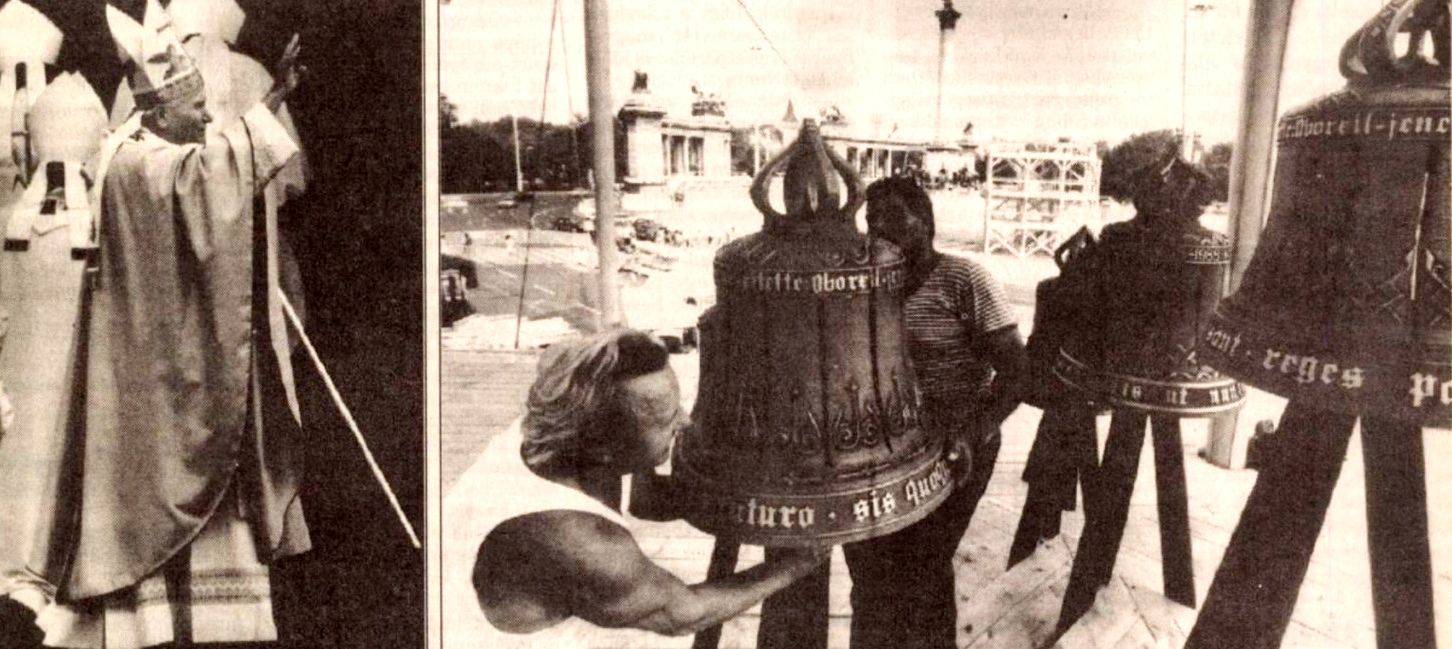
Preparations for the Papal Mass on Heroes Square (right) and the Pope (left) (Source: Pesti Hírlap, 16 August 1991)
A flurry of preparation followed this both in the Vatican and Hungary. By 1990, the socialist dictatorship of Hungary had collapsed. The first democratically elected government contacted the Holy See. This led to the creation of the nunciature (Vatican Embassy) on Gyimesi Road in the 12th District. The Primate's Palace in Buda Castle was also returned to the Hungarian Catholic Church.
State agencies and the Church created preparatory committees to organise the visit. Preparations were made in the nunciature as well, as it was where the Pope was planned to stay during his visit. Necessary security precautions were also taken, several road closures, diversions and searches preceded the visit.
The visit finally happened on 16 August 1991 (the liturgical feast day of Saint Stephen of Hungary), when the Pope's aeroplane landed in Budapest from Krakow. The head of the church was greeted in Hungary with an official reception and military salute. Exiting his plane, the Pope kissed Hungarian soil, and among others, said:
"I share your traditions and current shared efforts to build a happier and more humane future, as I am a. son of the Polish nation, which has so much in common with Hungarian history. I am also from this region of Europe, which stands now on the brink of a new age, and hopes to contribute to the creation of a peaceful community, the nations of which show solidarity with one another. Sons and daughters of Hungary! He who speaks to you considers himself your compatriot and shares your destiny."
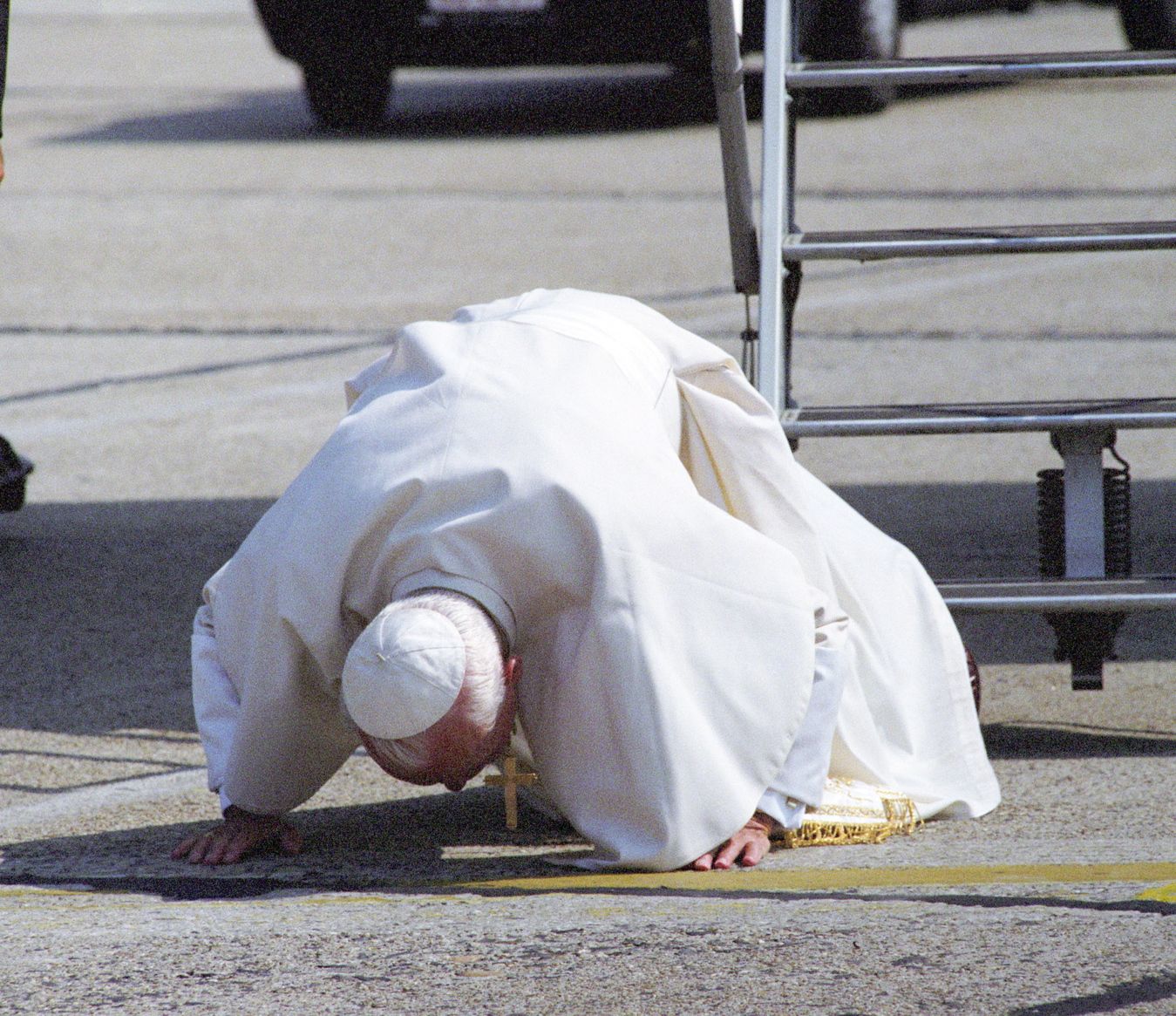
The Pope kissing Hungarian soil at Ferihegy Airport, 16 August 1991 (Photo: MTI/Soós Lajos)
From the airport, the Pope flew to Esztergom by helicopter, where he prayed at the grave of Cardinal Mindszenty before celebrating Mass. The Pontiff returned to Budapest the same day by hydrofoil. In Budapest masses of the faithful awaited the passing of the Papal craft.
In the evening the Pope met state dignitaries, including President Árpád Göncz and Prime Minister József Antall. He then greeted a crowd of tens of thousands on Kossuth Square. He began his speech in Hungarian, proclaiming: "Dicsértessék a Jézus Krisztus!" ('Laudetur Jesus Christus; Praised by Jesus Christ') After apologising for his pronunciation, the Pontiff continued by detailing the historical connections between Hungary and Poland. He continued by celebrating the Hungarian language with the words:
"It has become apparent that your language is wonderful and demanding. It is, in fact, a narrow gate. As narrow as the gate through which we must enter heaven. However, this is promising for Hungarians. All those who speak this language will also find that narrow gate, which leads to Heaven. This is a great prophecy for you. In any case, I wish that you all may cross the threshold of Heaven."
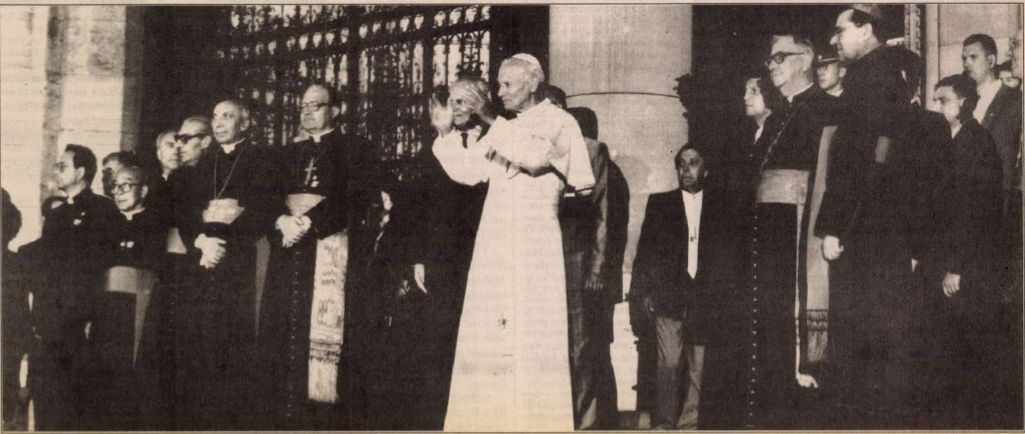
"Dicsértessék a Jézus Krisztus!" said the Pope on the stairs of the Parliament, 16 August 1991 (Source: Pesti Hírlap, 17 August 1991)
The Pope visited the countryside during his five-day visit. Beyond Esztergom, he visited Pécs, Debrecen, Máriapócs and Szombathely, among others. While visiting the locations around the country in the morning, the Pope would return to Budapest each afternoon. After returning from Pécs on 17 August, he met with leading scientists, academics and artists in a building of the Hungarian Academy of Scientists in Buda Castle, which whom he shared his belief that faith and reason both search for the same truth.
On the 18th he met with the leaders of the Jewish community in Hungary after a visit to Debrecen. The next day he spoke to future priests and monks in Matthias Church after returning from Szombathely. From here he went to Népstadion (now Puskás Ferenc Stadium) to meet a mass of Hungarian youths.
In his typically relaxed manner, he ordered his security detail away from the Popemobile so he could interact with the crowd freely. Reaching the stage the Pope greeted those present in Hungarian, prompting a massive ovation. "God loves you, for he himself is young! (...) Be steadfast and brave young Christians," said Jon Paul II.
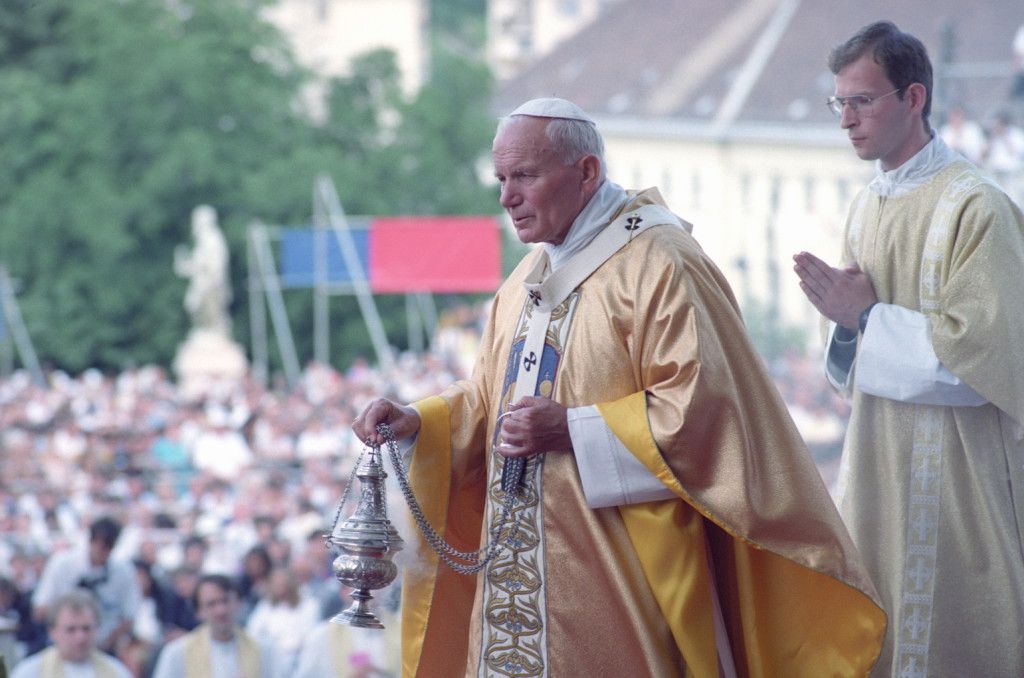
Pope John Paul II celebrates mass in Esztergom, the birthplace of Saint Stephen of Hungary and the centre of Roman Catholicism in Hungary on 16 August 1991. (Photo: MTI/Géza Szebellédy)
The height of the visit was, naturally, the Papal Mass celebrated on Heroes Square on 20 August. Before mass, the Pontiff met invalids in Saint Stephen's Basilica. An enormous crowd gathered for the Pontifical mass, with certain estimated reaching 500,000 people. Ambassadors stationed in Budapest also attended, including the Ambassador of the Soviet Union. (The Soviet Union broke-up slowly over several years in a process that came to an end in 1991.)
A coup against Mihail Gorbachev and his reform policies had just been carried out in the country, leading to fears that hard-line communists may return to power, risking the newly restored independence of Eastern European countries. This prompted the pontiff to address the situation in his speech. Hearing his words, the Soviet ambassador stood and left the square.
Hearing the news from the Soviet Union, I pray to God more and more that newer tragedies do not befall that great nation. I pray that the efforts of the last few years, which have aimed to give a voice and dignity to an entire society are not drawn into question" – said Pope John Paul II.
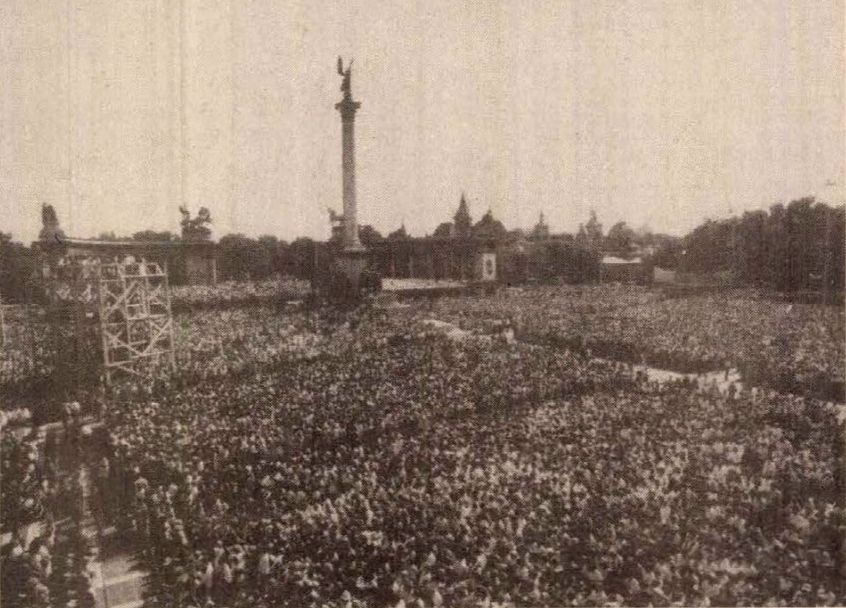
Papal Mass on Heroes Square, 20 August 1991 (Source: Népszabadság, 21 August 1991)
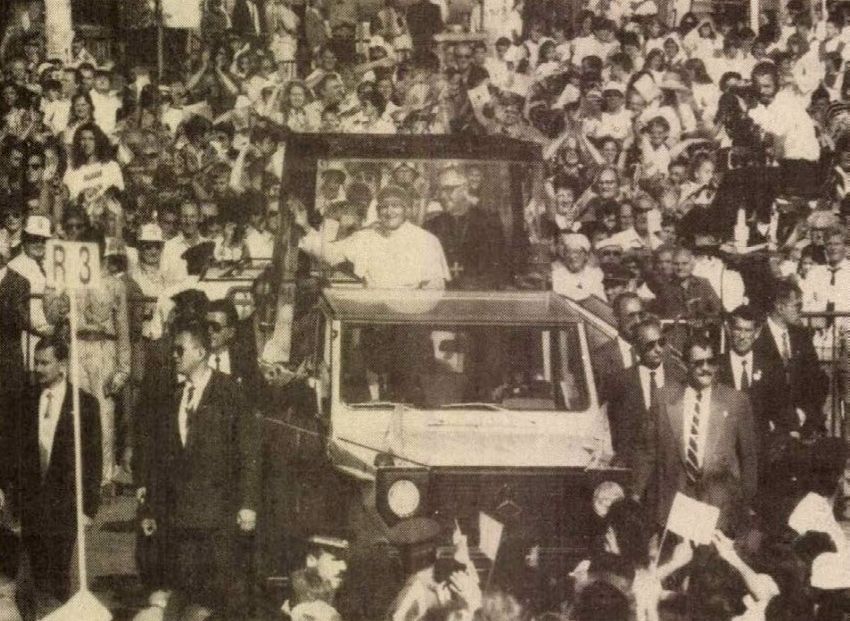
The crowd greets the Pope on Heroes Square, 20 August 1991 (Source: Népszabadság, 21 August 1991)
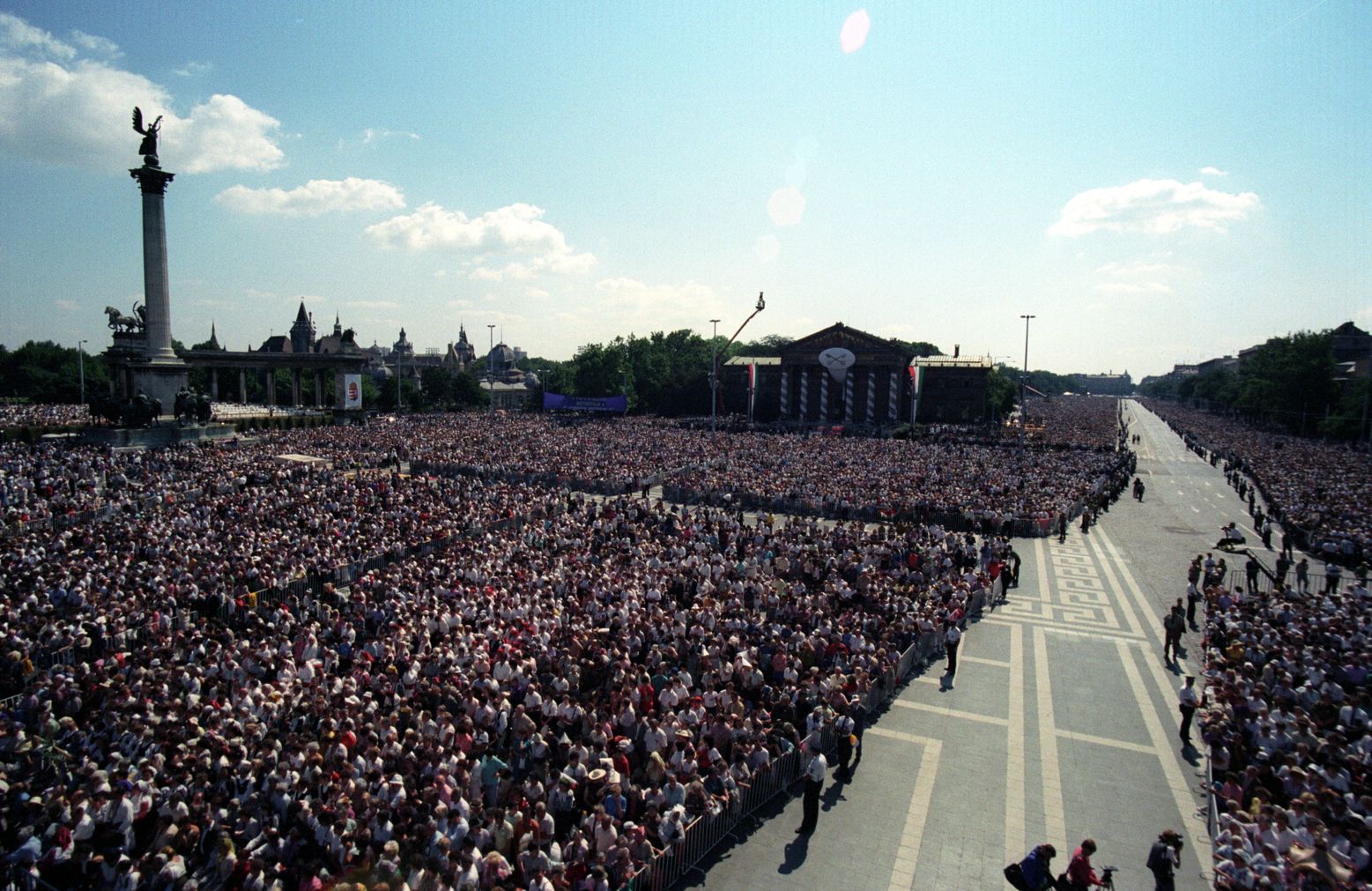 A mass of faithful gathered on Heroes Square, 20 August 1991 (Photo: MTI/Attila Soós)
A mass of faithful gathered on Heroes Square, 20 August 1991 (Photo: MTI/Attila Soós)
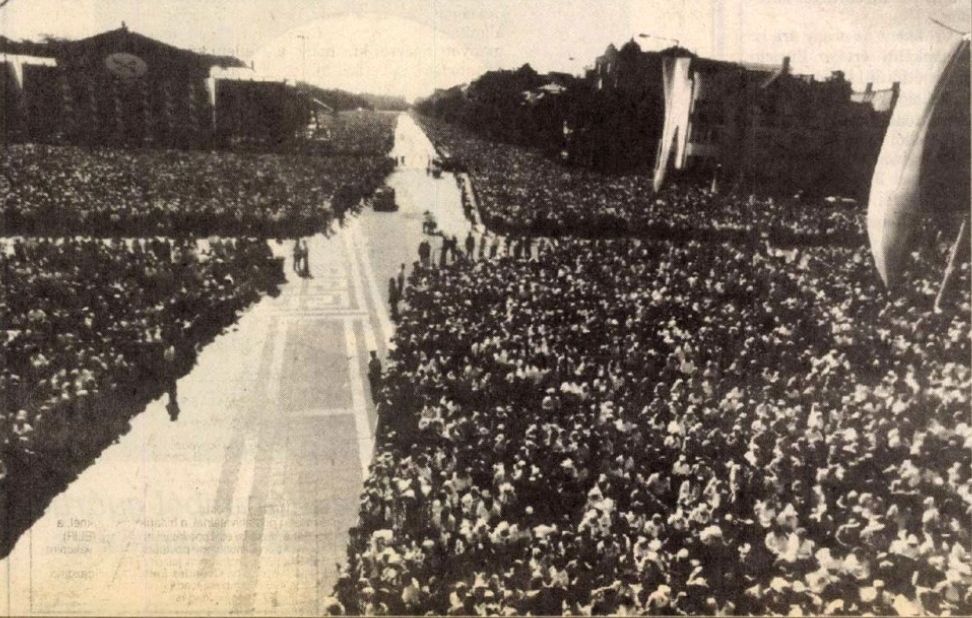
The crowd spread beyond the Kunsthalle (Source: Pesti Hírlap, 21 August 1991)
After Mass, the Pontiff went to Buda Castle where he had lunch with the Bishops of Hungary. The Pope left Hungary on 20 August 1991, bringing his first visit to an end. The head of the Catholic Church visited Budapest a second time in 1996 but only passed through Budapest, concentrating his time in Pannonhalma and Győr.
One of the most popular Popes passed away on 2 April 2005. His canonisation was initiated almost immediately after his death. He was beatified on 1 May 2011 by Pope Benedict XVI and canonised on 27 April 2014 by Pope Francis.
The pope remains extremely popular in Hungary as well. Some simply continue to refer to him as 'The Pope.' It is, thus, unsurprising that several statues of the pontiff have been erected around the country. His first statue in Budapest was unveiled in 2008. Created by János Babusa, the figure of the elderly Pontiff stands on a small mound within Szent István Park in the 17th District.
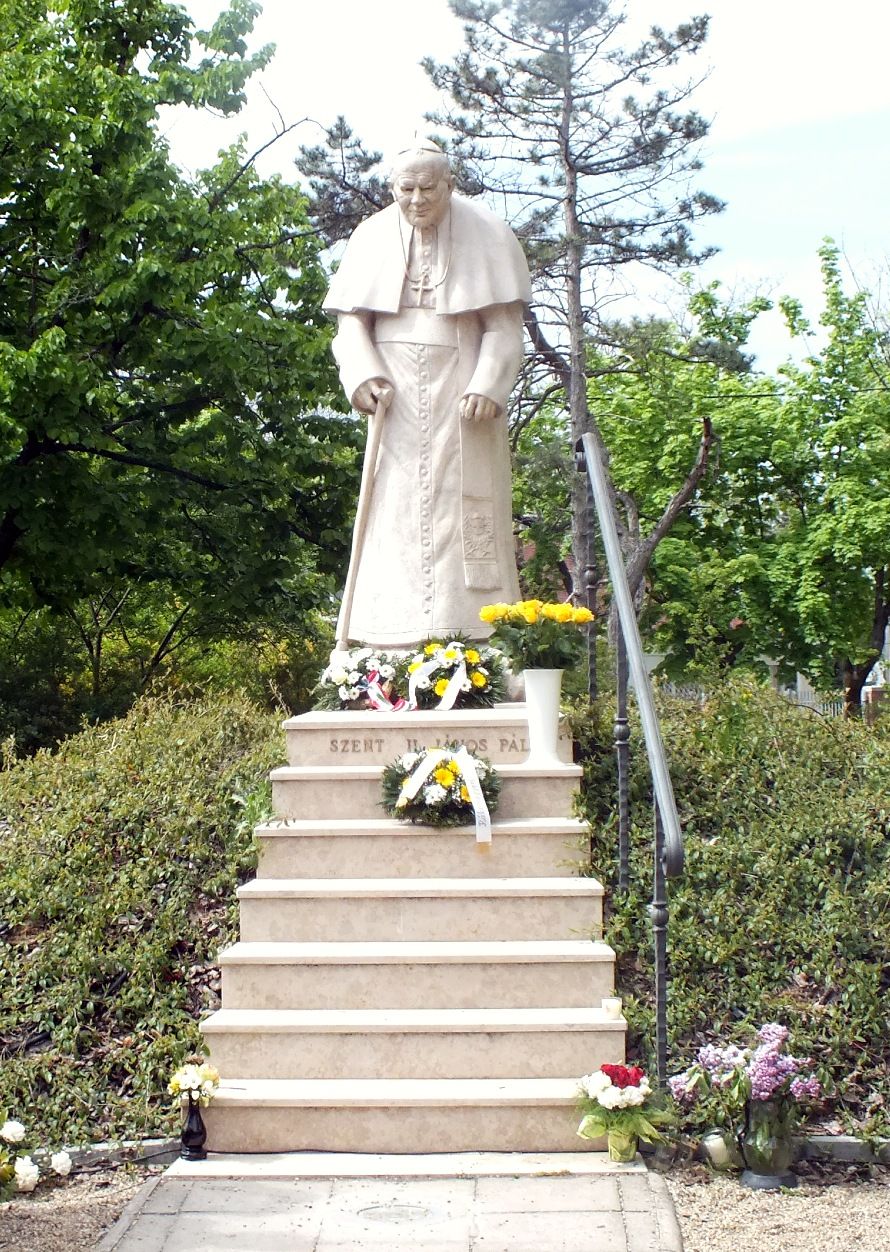
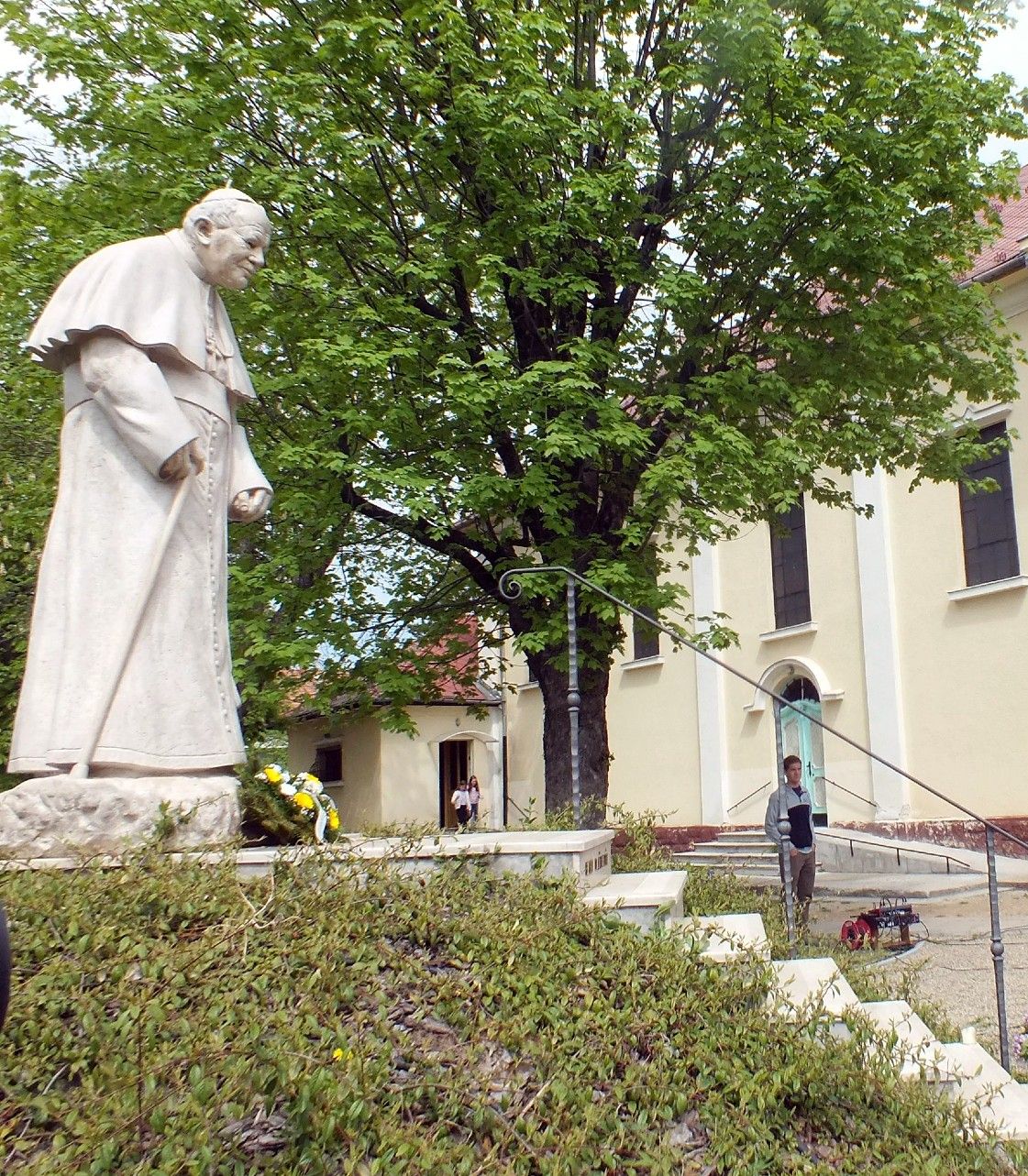
The statue erected in 2008 in Szent István Park photographed in 2010 (Photo: rakosmente.hu)
His cult in Budapest was reinforced by the decision to rename Köztársaság Square in the 8th District II. János Pál pápa Square, after the Hungarian form of the pope's name.
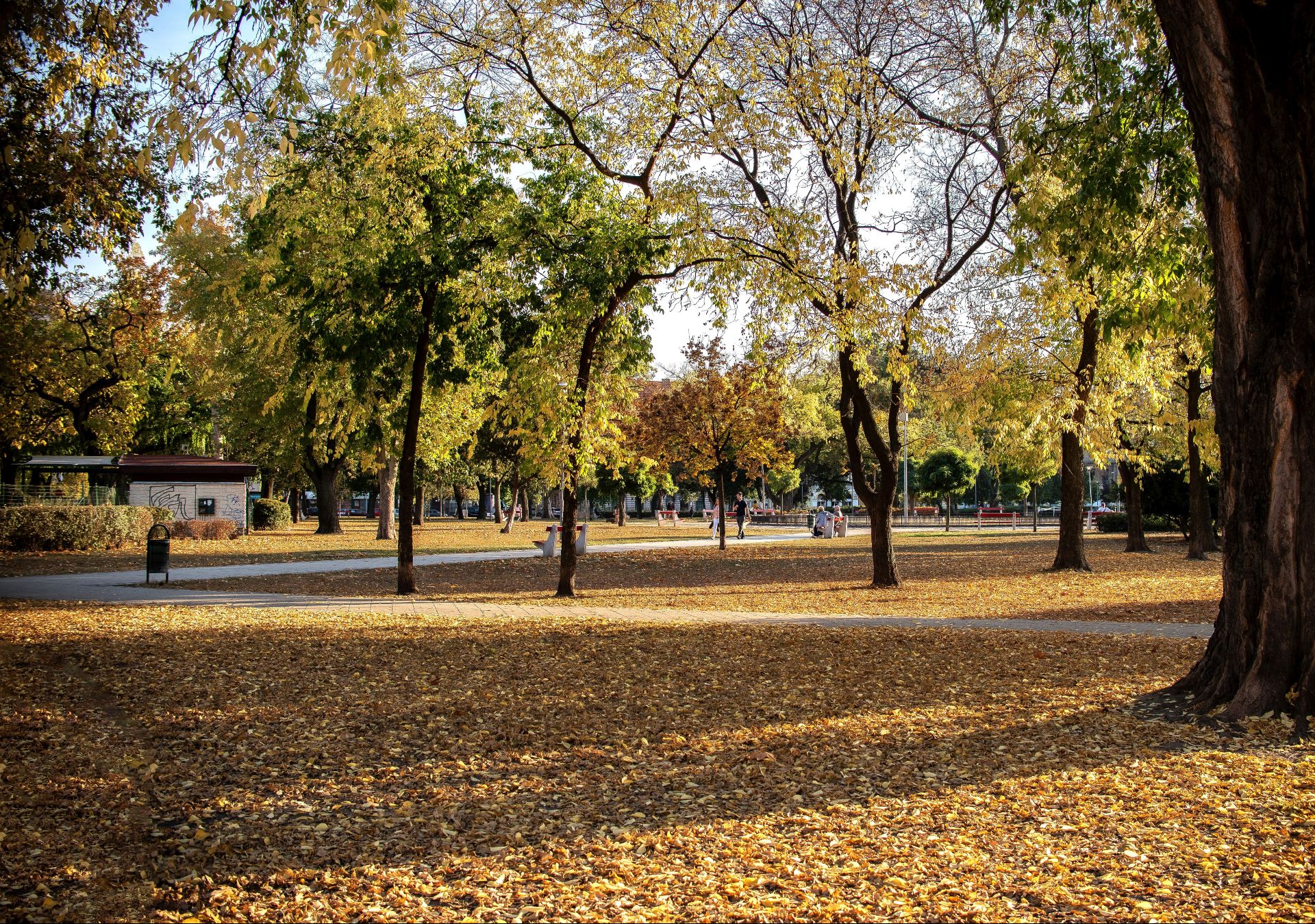
II. János Pál pápa tér in the 8th District (Photo: Balázs Both/pestbuda.hu)
In addition, a life-sized statue of the Head of the Church was erected beside the priests' entrance to Saint Stephen's Basilica.
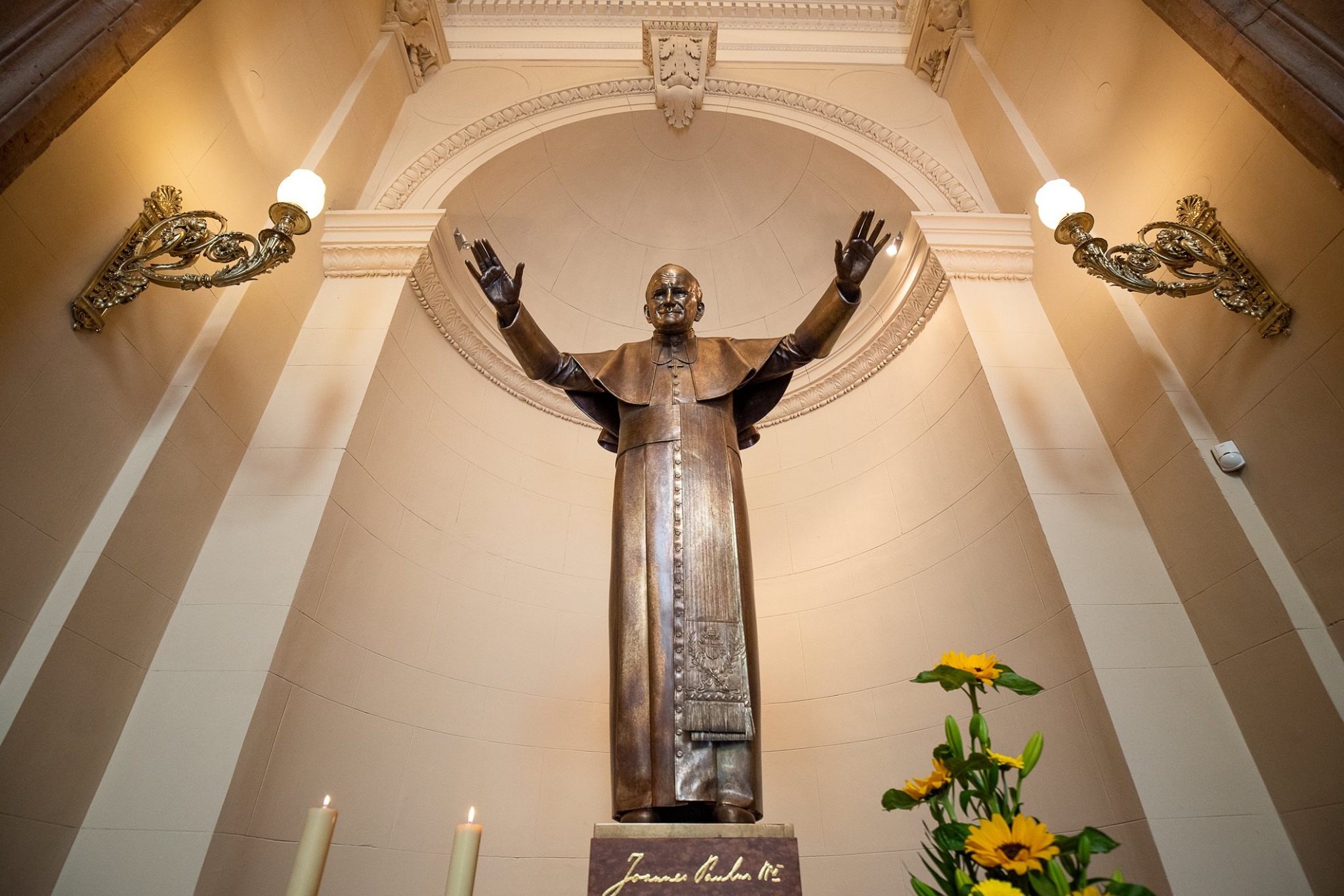
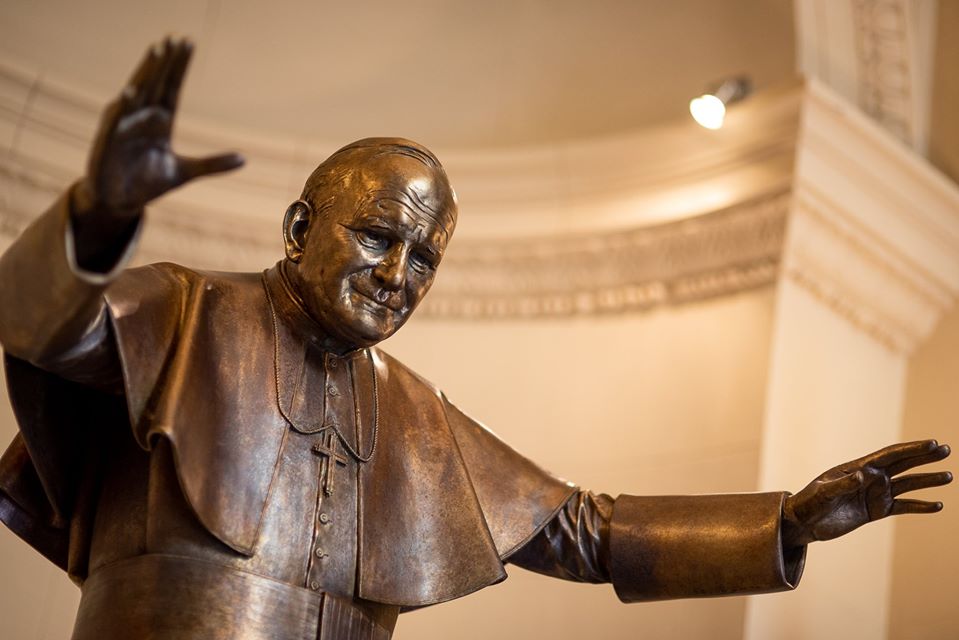
The statue of John Paul II erected in Budapest this year (Photo: Bielik István/Esztergom-Budapest Diocese)
Saint Pope John Paul II remains one of the most popular pontiffs. The Pope of Polish descent is remembered in history, as the pontiff who apologised for the crimes that the Roman Catholic Church had committed (or those that had been committed in its name). He strongly and openly supported human rights and peace, and dialogue between religions (he was the first Pope ever to enter a mosque). He raised his voice against the inhumane oppression of communism and socialism, and thus influenced the downfall of the Eastern block, and the regime changes of Eastern and Central Europe.
Cover photo: The pope on the stairs of the Parliament (Source: Pesti Hírlap, 17 August 1991)

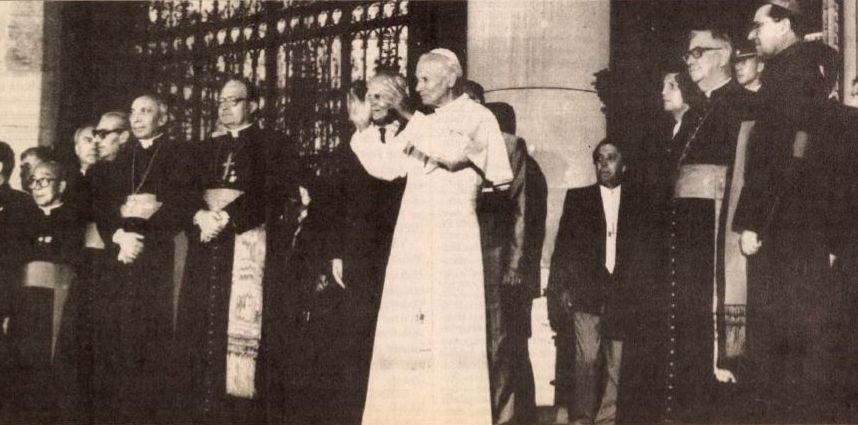



































Hozzászólások
Log in or register to comment!
Login Registration